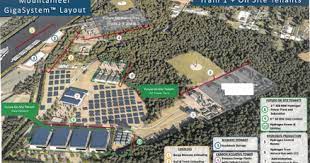From an Essay by Betsy Lawson to Morgantown Dominion Post, August 25, 2023
As reported in The Dominion Post on Aug. 17, the governor announced a big state investment in a hydrogen plant to be built in Mason County by Fidelis New Energy of Houston. The plant, to be called Mountaineer Gigasystem, is designed to generate hydrogen to be used for energy while capturing carbon dioxide to be buried below wildlife management areas.
The impetus behind this project is the money made available by the Inflation Reduction Act, passed last year, which provides tax credits for so-called clean energy. The intention is to reduce greenhouse gases, which trap heat in our atmosphere. Sounds good, but is it really?
Hydrogen gas, which is highly explosive, is made by separating the atoms of water (H2O), which requires a lot of energy. If renewable energy is used to separate the atoms, the hydrogen is “clean.” But the Fidelis project will mostly use fracked gas, whose drilling process and pipelines to transport the gas leak a lot of methane, an 80-times more powerful greenhouse gas than carbon dioxide.
Pumping CO2 underground, the second facet of this project, only works in very specific types of porous rock sandwiched between layers of solid rock, preventing its escape. But once the CO2 reaches the cap rock, the captured CO2 can migrate horizontally for a substantial distance. What could go wrong?
The West Virginia Department of Environmental Protection has identified 6,500 known orphaned oil and gas wells but potentially thousands more exist that have yet to be found. If these unplugged wells should reach into the potential carbon storage field formation, the potential for leakage into the atmosphere is enormous, defeating the purpose of carbon capture. For carbon capture and storage to make any sense in West Virginia, orphaned oil and gas wells must be properly plugged.
So far, carbon capture and storage is a new and commercially unproven technology. Chevron’s CCS project in western Australia, to date the largest in the world, is only operating at one-third capacity after six years of operation. Unexpected high pressures occurred, slowing the process.
It is known with certainty that injecting fracking waste water into porous geological formations increases pore pressure in ways that can trigger stressed fault lines to slip. This also applies to buried CO2. The result can be earthquakes. Further, when CO2 meets water, it becomes carbonic acid, a corrosive liquid. What effect will this have on underground water supplies?
Bottom line: hydrogen gas is expensive to produce, so will there even be a market for it? And, if it relies on natural gas for its creation, methane will be leaked into the atmosphere. Tying it to unproven carbon capture risks leaking more CO2 into the atmosphere via the many abandoned wells in this area.
With the state’s $62.5 million in forgivable loans and anticipated funding from the federal government, the public investment for this project could already be at $112.5 million before ground has even been broken. Do we taxpayers want to further subsidize a project that has such an unproven and potentially risky technology and continues to add greenhouse gases into the atmosphere? This project defeats the purpose of the Inflation Reduction Act, which is meant to reduce the greenhouse gases that are warming our planet.
>>> Betsy Lawson is the Secretary of the Monongahela Group of the W.Va. Chapter of the Sierra Club.
#######+++++++#######+++++++########
Mountaineer GigaSystem Project ~ Memorandum of Understanding with West Virginia Economic Development Authority. Some call this a massive giveaway to an out of state company having no established record of technological quality or concern for our communities!

